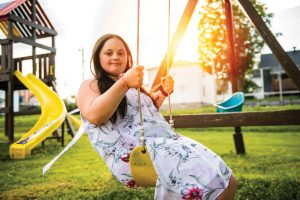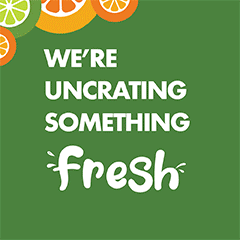Parenting Guide: Special Needs
Transitioning to adulthood is a big step for individuals with special needs, but there are local organizations that can help lead them to a secure future.

Of the many challenges that parents of special needs children face, one that keeps many mothers and fathers up at night regards their child’s transition into adulthood. While school can provide a safe haven, much-needed services and socialization opportunities, when they start to age out, the next step is often unknown and the cause for concern.
“They get so much support in school from the teachers and aides, and they also may benefit from ABA therapy, speech therapy or physical therapy,” says Brittany Pilcher, development director at the Center for Independent Living (CIL). “But all of those services drop off because they’re connected to school, and there aren’t a lot of programs that are built in for transition. The parents have to go seek it out.”
That’s where organizations like CIL can step in. Serving eight counties in Central Florida, including Orange, Osceola and Seminole, CIL offers a Step Ahead program for students between the ages of 14 and 22 to assist with the transition from school to adult life. Utilizing a holistic approach, the program helps them prepare for their future by exposing them to opportunities and developing necessary skills.
“It’s a big need because once you’re done with school, what’s next?” Pilcher says. “Is it college? Is it learning a trade or going into the workforce? What are you doing to be as independent as possible? We help through our youth transition services with guidance, identifying their skills and what they like to do, and then we have programs that can help them get into the workforce.”
One of those programs is Aspire to Hire, which helps participants leverage their unique abilities into meaningful employment. In addition to teaching social skills and pre-employment skills like how to write a résumé or what to wear on an interview, it also involves insight into different fields in which they might thrive.
“It’s very holistic, very supported and very career-driven, because we want this person to be a long-term fit, which is good not only for that individual but also the company,” Pilcher says.
Project Search is another option in which CIL and similar organizations partner with local hospitals. Students about to age out of school can engage in a program that runs the full academic year, where they do three job rotations: facilities/environmental services, central supply and nutrition/food services. It’s similar to an internship and after graduating from the program, students are encouraged to apply for a job at the hospital or use the skills they learned to seek a position elsewhere.
“These students don’t have a lot of experience, they might be shy and they might not have confidence,” Pilcher says. “To see that on day one and then fast forward to May and see where they end up is the best part. They walk across the stage confidently and the supervisors talk about how they’re the best team member, are always on time and so dedicated, and then you hear that they got a job in that department or we helped find them a job with another community partner. These are jobs that are paying well over minimum wage, they’re full time with benefits. We’ve been doing this program for seven years, and there are still people from year one who are employed at the hospitals and they now have leadership roles.”
CIL holds career camps as well, where students can pursue their different interests, find out more about certain industries and learn about their disabilities and how to advocate for themselves in the workplace.
The ultimate goal for all of these programs is to ensure a secure future for each individual who comes through CIL.
“We don’t want them to fall off,” Pilcher says. “We want to help them figure out what they would like to do and what supports they need and guide them. We don’t want them to hit 25 and not know what’s going on, because there aren’t a lot of services then. So let’s get them during this in-between period when they get out of high school and into adulthood.”
Play Ball
Participation in athletics has long been lauded for the many benefits it brings to able-bodied children. Along with lessons about teamwork, sports also give kids the chance to spend time with their friends and to learn the value of physical activity and competition.
The same is true, and perhaps even more so, for children or young adults with either an intellectual, developmental or physical disability. In addition to the aforementioned advantages, the special needs population may also learn to feel comfortable around others, boost their self-esteem and build relationships they otherwise would not have had a chance to.
Fortunately for local residents, opportunities abound at Central Florida Dreamplex, which offers a variety of activities, athletic clinics and adaptive sports for all ages.
“There are other programs for sports, obviously Special Olympics and things like that, but what we found is [families] wanted something a little more recreational,” says Cameron Gomes, chief executive officer of Central Florida Dreamplex. “There’s a competition piece to Special Olympics and we have plenty who are involved in both, but there are some who just want to have fun with the activities. None of ours are competitive based; it’s more just about staying active and being with friends and peers. The families enjoy it because they’re connecting with each other and going through a lot of the same things together rather than in isolation.”
Popular classes at Dreamplex are karate, judo, gymnastics, Zumba, arts and crafts, and cardio boxing. There are also athletic clinics for basketball, soccer, flag football, kickball, volleyball and more that teach the fundamentals of each sport. Adaptive sports get a little more competitive and include wheelchair basketball, track and field, and sled hockey.
The classes and clinics rotate about every month or six weeks to keep things fresh, and as soon as a new schedule is released, there is a rush to sign up.
“They definitely look forward to these days,” Gomes says of the participants. “Maybe it’s a new volunteer group each time so they’re meeting new friends that way. Depending on the sport, that might not even be what they’re looking forward to most, they’re just looking forward to the camaraderie.”







